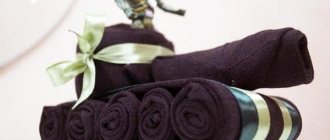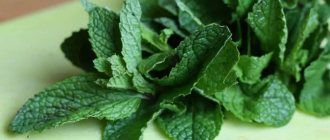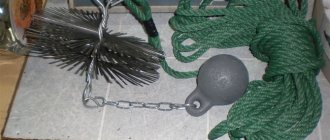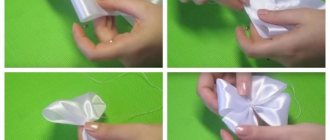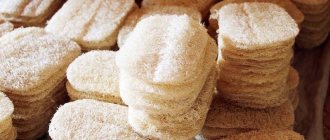With the arrival of autumn cold weather, mice begin to actively move from summer areas to human houses and apartments. Every year we have to contain the rodent infestation and look for more and more effective methods of control. There are only two ways to defeat the invasion of mice that have settled in your house or garage - get a cat or regularly install mousetraps. The bigger, the better. The easiest way is to make a mousetrap from a plastic bottle with your own hands. Costs are minimal, especially since there is plenty of material for traps. If you guess the design of a mousetrap made from a plastic bottle, then you can end the problem quickly enough.
Which trap to choose
At first glance, the easiest way is to buy a ready-made mousetrap or make a similar design with your own hands. But this is only at first glance. A mouse, like a rat, has considerable intelligence, learns quickly and remembers well how to bypass mousetraps. Therefore, it will be useful to periodically replace old plastic bottle mousetraps with new, more effective and efficient designs.
Most often, several of the most popular designs are used to combat domestic rodents:
- Petal mousetrap, it can be made in a couple of minutes, there is a considerable risk that the mouse may escape from the trap before it is reached;
- Falling mousetrap, if you make a structure from a plastic bottle exactly as described, then the effective operation of the device is guaranteed;
- A mousetrap is a rocking chair, the most difficult to make, but also the most effective. It can be done in several versions, the main thing is to follow the principle of operation. Such mousetraps can operate reliably for many years without any major complaints.
Advice! Don't underestimate the ability of mice to escape traps. You need to check traps as often as possible, since according to statistics, approximately half of the rodents successfully escape from the trap.
You can get an idea of the capabilities of mouse balancing act and understand how to make a mousetrap from a plastic bottle from the video
Other ways to kill mice
Not everyone wants to make their own mousetraps. If you want to choose simpler and less energy-consuming methods of fighting mice, then I advise you to read the portal materials using the links below.
Over the long history of fighting mice, people have collected the most effective methods. More details about them.
Safe and effective means of protecting your home from mice can grow on the site. Read more about their use.
A mousetrap is the first thing you think about when there is a mouse in the house. Types and applications of the tool in this article.
What you need to know before making a bottle mousetrap
First of all, you should not count on the absolute effectiveness of a mousetrap; even the most successful and effective, at first glance, trap can malfunction, so it will be useful to observe how the mouse falls into the trap and, most importantly, how it tries to get out of it. Such observations can be very useful when it comes time to make a new, more cunning mousetrap.
When planning the design of a mousetrap, there are three factors to consider:
- The plastic bottles from which the traps are made must be changed at least once a month;
- Poisons and toxic substances must not be used in mousetraps;
- The labor intensity of making a mousetrap from a plastic bottle should be minimal, otherwise this activity will quickly get boring.
The mouse has the ability to capture the most subtle odors. If a dozen mice are caught in a mousetrap, then odors with “signals” of panic will definitely remain on the plastic bottle. Such mousetraps should be thrown away without regret, and a new trap can be made to replace the old one.
The material of a plastic bottle does not pose a particular barrier for a rodent, so it is important not only to catch, but also to get the mouse out of the trap in time, before the animal simply gnaws a hole and runs away with the bait.
Harm and danger to humans
Mice in an apartment are not only an unpleasant and repulsive sight. Unwanted “neighbors” cause real harm to the property of home owners, and also pose a danger to their health:
Mice gnaw everything they can get their teeth into (furniture, partitions, baseboards), ruin wallpaper, and clothes. In search of food, they come not only to kitchens and places where human food supplies are stored. Mice are permanent inhabitants of dirty basements, garbage dumps, landfills, and garbage cans. These animals are carriers of pathogenic bacteria, microbes, and spreaders of life-threatening viral diseases.
On a note! Like all rodents, mice reproduce very quickly in comfortable conditions. One healthy female produces offspring of 15-20 mice per year. Already at three months they are full-fledged adults, beginning to reproduce independently. If urgent measures are not taken to exterminate rodents in the apartment, they will completely take over it in a very short time.
Options for the most successful mousetraps
All of the mousetrap designs below do not require special skills or tools and can be made, as they say, “on the knee” in a few minutes. To build a trap you use:
- Scotch tape and adhesive tape, nylon threads;
- Plastic bottles with a capacity of 2 and 3 liters;
- Scissors or stationery knife;
- Bait.
Advice! A piece of salted lard, fried seeds and a walnut kernel work reliably as bait.
Oddly enough, cheese or sausage are significantly inferior in effectiveness to lard; such bait quickly dries out and loses its attractiveness.
Make an effective bottle mousetrap in 60 seconds
A simple and quite effective mousetrap can be made from an ordinary three-liter plastic bottle. We use a nut kernel as bait. The full course on how to make a mousetrap from a plastic bottle is shown in the video
Initially, you will need to make a mount for the bait from two loops of nylon thread.
Using a utility knife, make a cut on the wall so that you get a petal covering a small window. The window size should be no more than 20 mm. Due to its rounded shape, the petal should easily bend inside the plastic bottle and not deviate outward, preventing the mouse from getting out of the trap.
We pierce the side walls of the bottle on both sides, stretch the thread with the bait and fix the suspension in a taut state using matches and tape.
The place for hanging the bait can be chosen at a height of at least 10-12 cm from the bottom, this is enough for an ordinary mouse, sometimes rodents demonstrate miracles of jumping ability, so the design of the trap can be supplemented with another bottle, which will catch everyone who covets the bait.
An important point - bait
Mice and other rodents are quite smart creatures, so you can’t do without tasty bait. It has been noted that even a high-tech mousetrap without the appropriate bait is simply useless, so its significance is obvious. The following products are ideal as bait:
- Sunflower seeds. You can use both raw grains and roasted confectionery seeds. Rodents have a good sense of smell and search for food by smell. A tasty-smelling bait will attract the rodent to the trap.
- Bread. Mice don't disdain even a piece of bread. For flavor, it is better to soak a piece in butter or natural sunflower oil. Surely the aroma of sesame oil will make a rodent enter the bottle.
- Salo. This product has a specific spicy smell due to fats and garlic, which is good at luring small pests.
- Popcorn. Sweet or salted corn is also an excellent beacon for rodents.
- Smoked sausage. The aroma of spices in this product has been attracting mice for years. Our grandmothers also used sausage in mousetraps.
The myth that mice are attracted to cheese has long been dispelled. However, if you choose aromatic varieties of this product, then it is quite possible to use it as bait.
The simplest mousetrap options
The simplest version of a mousetrap made from a plastic bottle is shown in the video
You can make a simple device with your own hands in a few seconds. You only need to cut off the neck and cut the edge of the remaining container with scissors in the form of triangular teeth, 30-35 mm long.
The jagged edges are folded into the bottle, and the bait is placed on the bottom of the trap. According to the creators' plan, the mouse gets inside the mousetrap, but will not be able to get out of it because of the teeth.
A more effective version of a mousetrap can be made from a plastic container according to the diagram below.
You need to cut off the top of the bottle, turn it over, remove the cap and put it back into the cut part. The result is a design reminiscent of an old non-spill inkwell.
It is recommended to treat the inside of the mousetrap with sunflower oil, and the installed upper part of the trap will need to be fixed with a stapler.
A good falling mousetrap can be made from an ordinary plastic bottle with a window cut out in the neck area. Bait is placed at the bottom of the bottle, and the trap itself is tied with a cord around the neck and placed on the table.
To trigger the mousetrap, it is placed on the edge so that the bottom part with the bait is behind the edge of the tabletop. The mouse, having climbed into the bottle, upsets the balance, which leads to the container tipping over and hanging on the cord.
Getting out of the mouse container is quite difficult. It will be necessary to remove it from the trap in time before the cat steals it along with the trap.
How to catch a mouse in an apartment
Man is the king of nature. Therefore, he must cope with his “subordinates” easily and naturally. Moreover, if among the latter there are small and dangerous rodents. They may not eat much, but they spread serious diseases.
A cat knows better than anyone how to catch a mouse in an apartment. But she doesn’t share her secrets, and besides, cats are poorly controlled and very unstable. That is why homemade mouse traps can give any mustachioed predator a run for its money.
Of course, you can buy a mousetrap in a store. But for a resident of Russia, the very thought of buying such a simple thing comes to mind only after a complete loss of creative abilities or after being included in the Forbes list.
Important:
The mouse is a cautious but stupid animal. Don't think of him as a wise scout capable of avoiding camouflaged traps. Rodents live by instinct and this is their weak spot.
Homemade mousetraps benefit from being loaded with the right bait.
Mouse trap baits
The mouse has very poor eyesight, but its sense of smell is simply phenomenal! The physiology of mice has evolved in such a way that the number of neurons in its olfactory bulb constantly increases throughout life. This occurs due to migration from the subependymal zone of the ventricles of the brain.
The mouse is very well versed in odors, can identify them and has a clear gradation according to the degree of their attractiveness. In critical conditions, the mouse can feed on candles and soap. If possible, the attractiveness of baits should be arranged in the following sequence:
- Sunflower seeds;
- Nuts (including peanuts);
- Meat (fat);
- Bread;
- Chocolate;
- Cheese.
If desired, you can experiment with baits. To do this, you will need to make your own mouse traps of the same design, which use different products. After each successful operation, you need to note which bait attracted the rodent.
In a couple of weeks, you will have a systematic catalog of baits.
TIP: baits can be combined to enhance their attractiveness.
How to make a mousetrap - a rocking chair
The most perfect mouse trap can be made using the principle of a swing or a pendulum. The principle of operation of the mousetrap is in many ways similar to the previous version of the trap, the only difference being that the bottle does not tip over from the table, but tilts under the weight of the mouse, blocking the exit from the trap.
The typical design of the device is shown in the photo. The principle of operation can be seen in more detail in the video.
In order to make a trap, you will need a 1.5 liter bottle, preferably with a long and narrow neck. Since the mousetrap must swing freely under the weight of the animal, you will first need to determine the line on which the center of gravity is located. To do this, you can place an ordinary faceted pencil on the table and a container on it. Moving the bottle left and right, we find the equilibrium position and mark the line with a marker.
According to the plan, the bottle should swing on an axis of rotation, which can be used as a piece of flat steel wire or a bicycle spoke. On the balance line, mark the midpoint and use an awl to punch two holes through which we pass the axis of rotation.
A plastic container with a steel axis will need to be installed on a stand. To do this, you can use a small piece of board, 35-40 cm long. We nail two wooden blocks of the same size to the board, on which the axis of rotation will rest. When rocking, the neck of the bottle should lower and rise at least 20-30 mm.
All that remains is to manufacture and install the locking block. The height of the block is selected such that, in a raised position, the lower edge of the hole for the plug is at the same level as the upper edge of the wooden block. This way, the mouse can easily climb up the bar into the trap. Under the weight of the rodent, the bottle will turn and close the entrance to the container. It is clear that the weight of the bait should be half the weight of the rodent, optimally 3-5 g, no more.
What bait to use
It is necessary to lure rodent pests to an improvised trap correctly. You need to select treats that most attract mice. There is an opinion that the favorite food of mice is cheese. In fact, rodents prefer foods that have a stronger odor. Bulk products are excellent for luring animals: buckwheat, wheat or rice. Mice are attracted to various oils: sesame, vegetable. They are not averse to eating fresh meat.
Some tips will help you achieve positive results when catching rodents. Thus, it is recommended to place a homemade trap in those places where the largest concentration of pests is observed. The best results will be if you place the trap near the mouse nest.
It is not difficult to create a device for exterminating rodents in the house. It is necessary to make a little effort and use available materials. Homemade traps are not only profitable from a financial point of view, but also absolutely safe for health. The use of environmentally friendly mousetraps is especially important for those who have pets or children at home.
To get rid of rodents, you can use the help of professionals by ordering a pest control service to your home or buy pesticides for baiting mice in a specialized store.
Trap made from a plastic bottle and bucket
The oldest and most proven mousetrap can be made from a half-liter bottle, wire and a galvanized bucket. Initially, you will need to drill a hole equal to the diameter of the wire in the bottom and in the cap of the bottle. The latter plays the role of an axis of rotation, so the plastic container should rotate freely and effortlessly. The length of the wire is chosen 5-7 cm larger than the diameter of the bucket.
The bottle, dressed on a wire, is additionally fitted with a tin lid used for preservation. From the side of the bottle, a bait is tied to the lid and the entire structure is installed on the bucket. You can attach a wooden plank or plank to the bucket to make it easier for the animals to climb up. If there are a lot of mice in the garage or basement, then the inside of the bucket must be wiped with oil or filled with water to make the surface as slippery as possible. Up to ten animals can be caught in a trap during the night, so measures must be taken to prevent mice from escaping from the trap.
The mousetrap works quite simply. The mouse, trying to get to the bait, steps onto the rotating bottle and falls down. Due to the slippery surface of the plastic, it is almost impossible to catch on the bottle. Unlike previous designs, such a mousetrap can be freely left overnight without fear that rodents will damage the trap or be able to escape from it.
Instead of a bottle, you can use any object with a large diameter and a smooth surface. You can install a ruler, a piece of polypropylene water pipe, and even a piece of glass. Wood and untreated metal work the worst.
Harm from a mouse infestation
Mice in the garden are a problem for gardeners. They spoil the harvest, stocks of vegetables and cereals. In the house they leave traces of vital activity, spoil clothes and leave an unpleasant odor. Also, what is most dangerous, they are carriers of diseases.
Dangerous field mouse at home
Although the field mouse is indeed small, it can turn out that the damage it deals is really great. And the point here is not that he feeds on reserves and destroys them, leaving his excrement on them.
It is worth knowing that field mice are often carriers of serious diseases (for example, brucellosis). In addition, rodents in the home can lead to very serious problems.
Mice often make holes by gnawing holes. This means that the building's timber structures are at risk. In addition, they often make holes in the facade, insulation and similar places. Mice have very sharp teeth, so it can make a very deep hole in an instant.
In addition, the smell of these animals is truly repulsive. Therefore, you should protect your home, basement or attic from visiting these aggressors at all costs. In addition, if a situation arises that a mouse has settled in the house, you must immediately begin to fight it.
